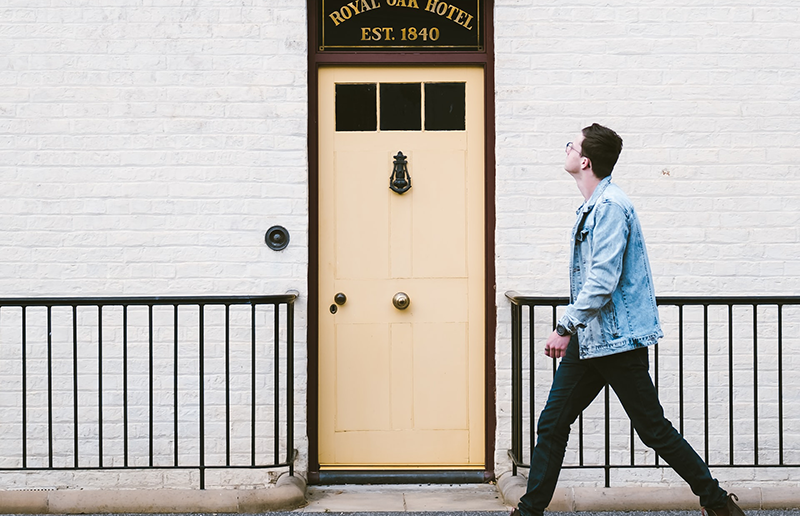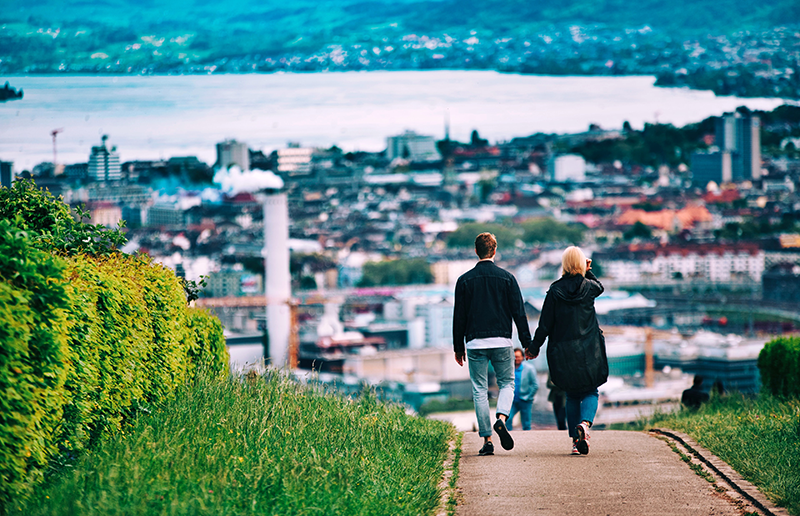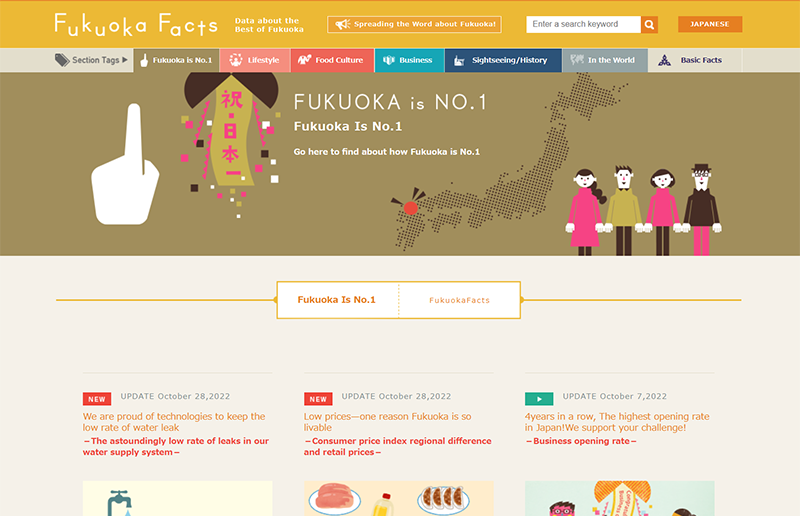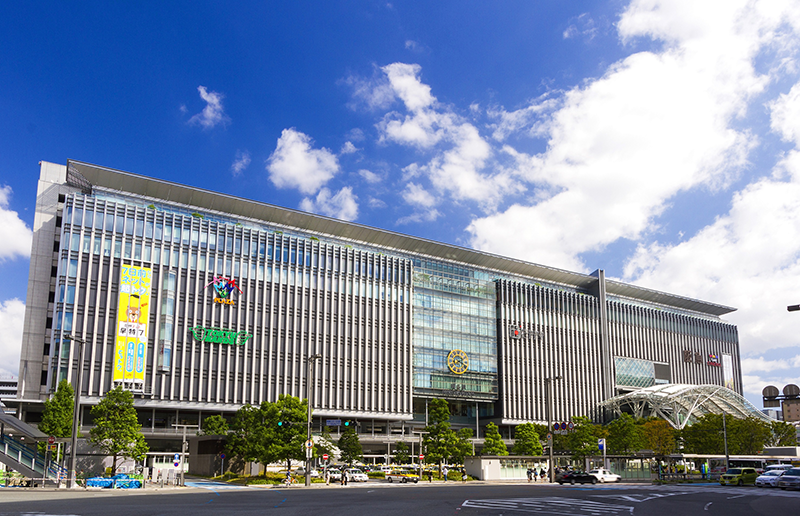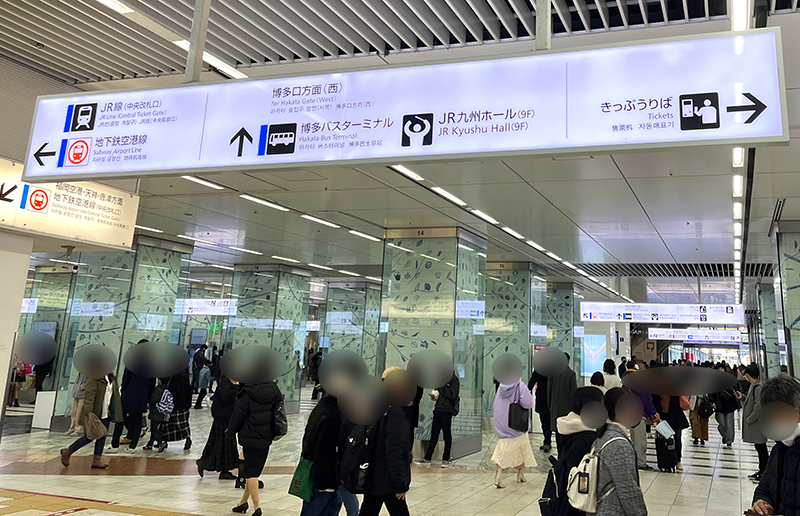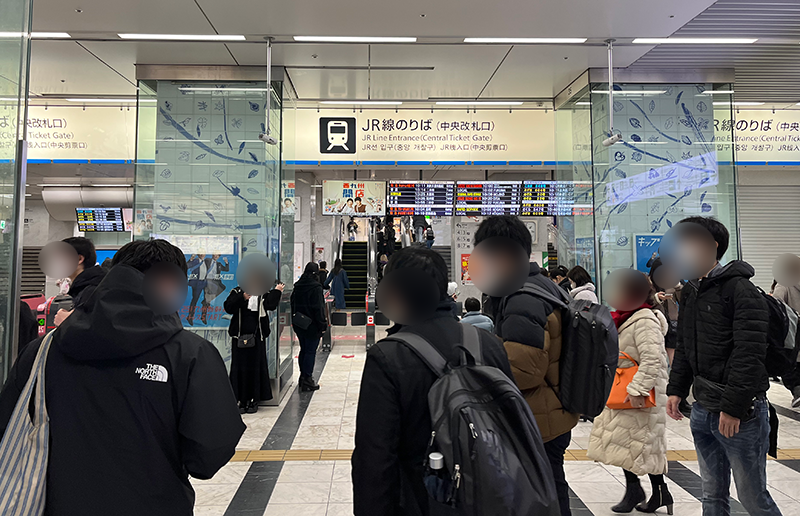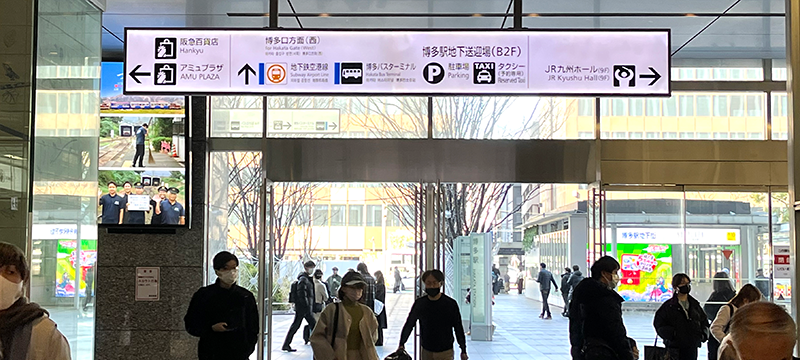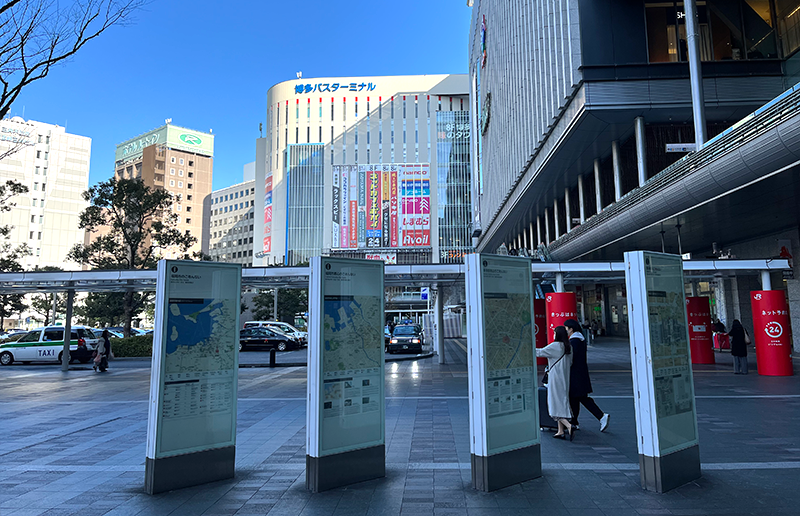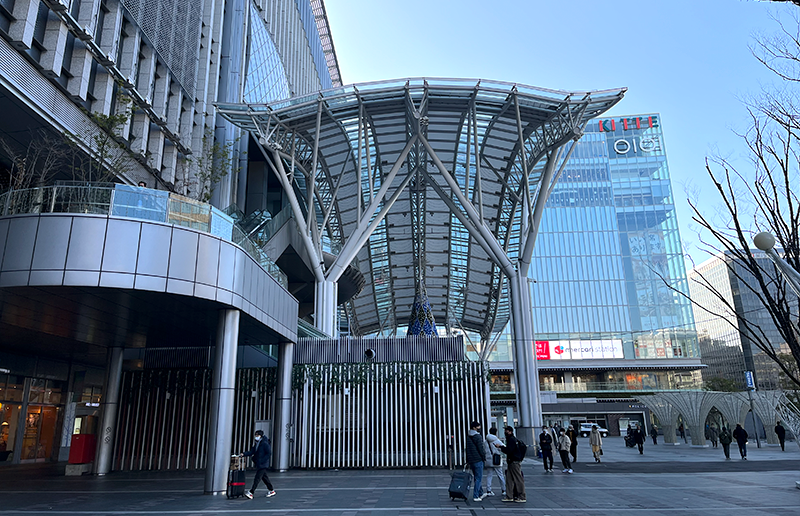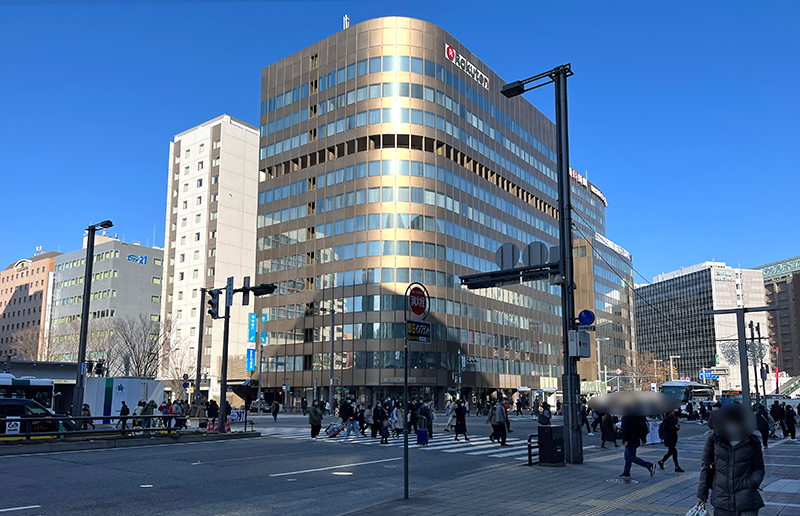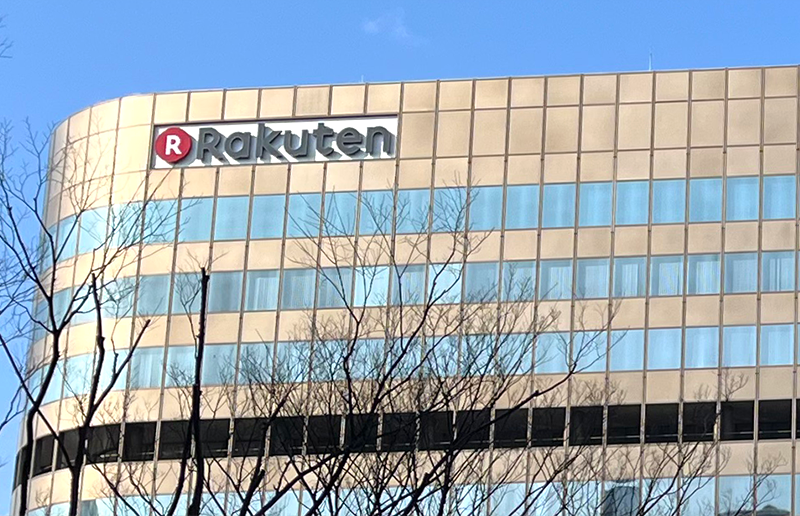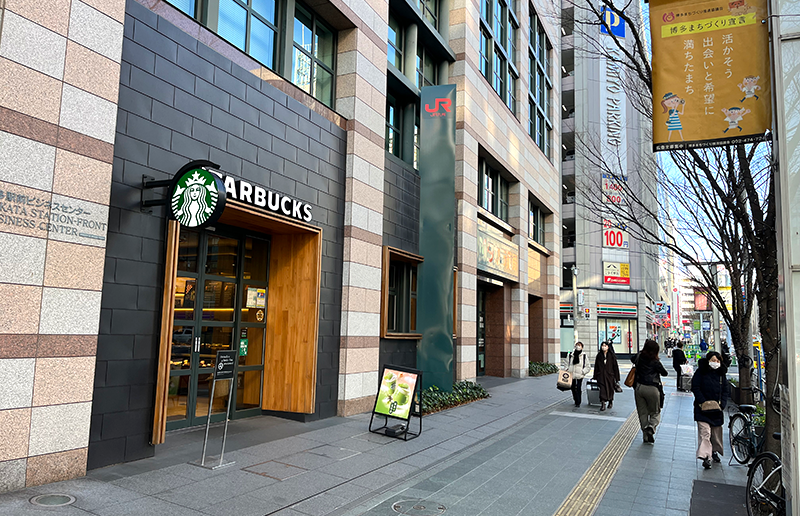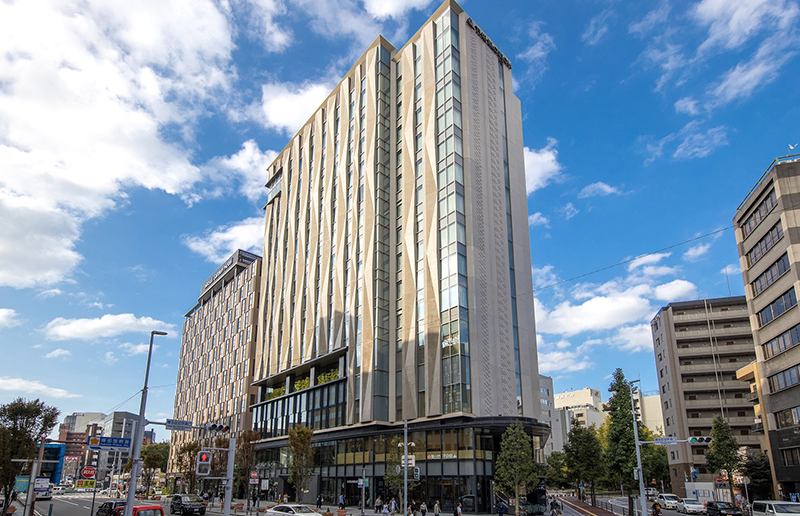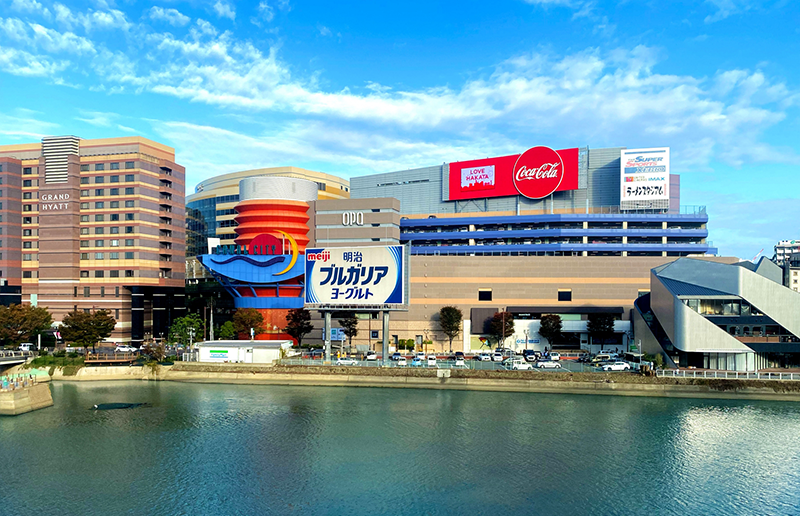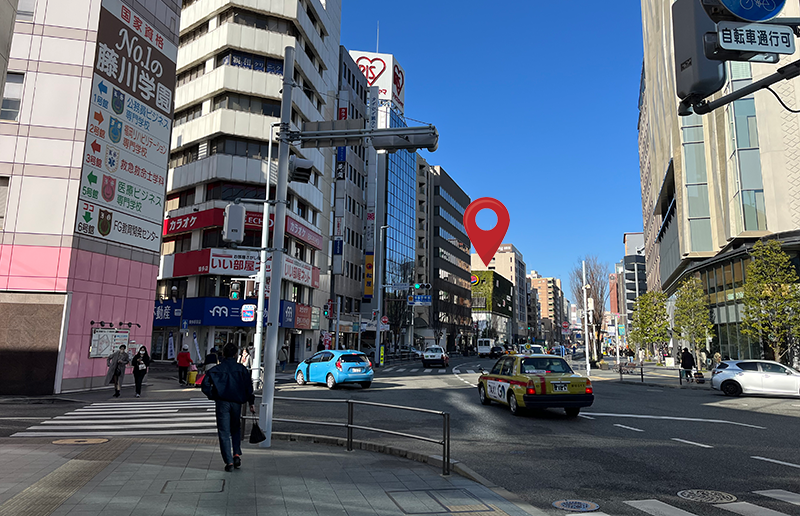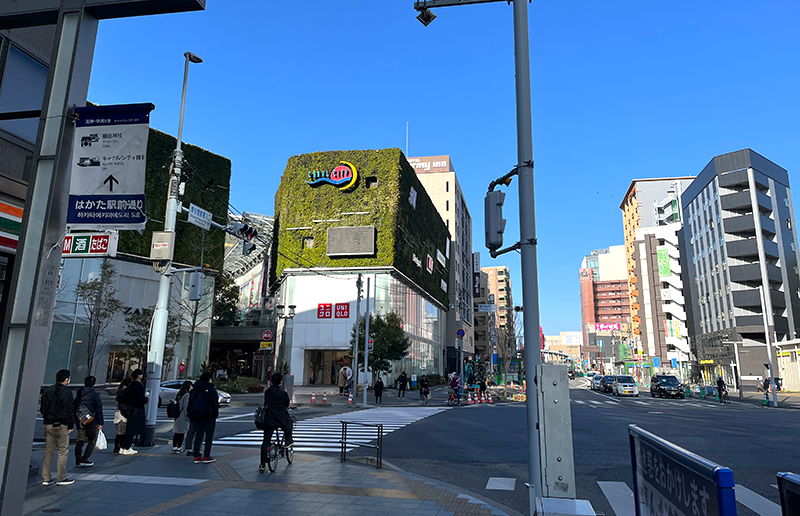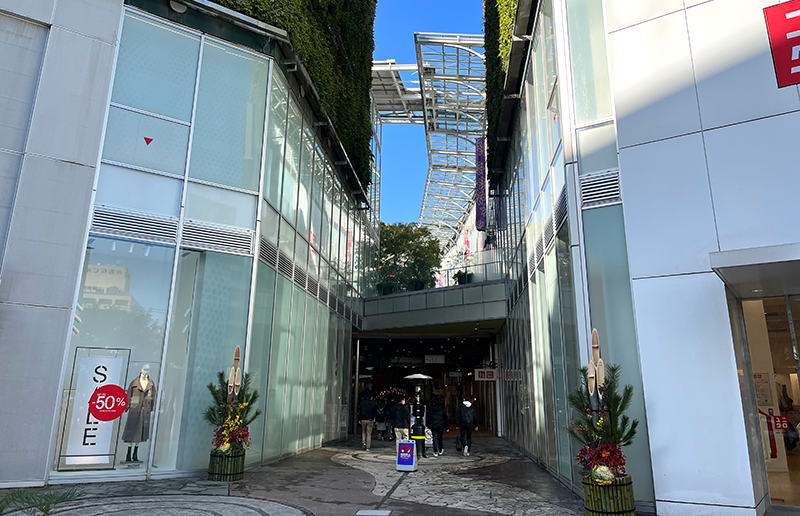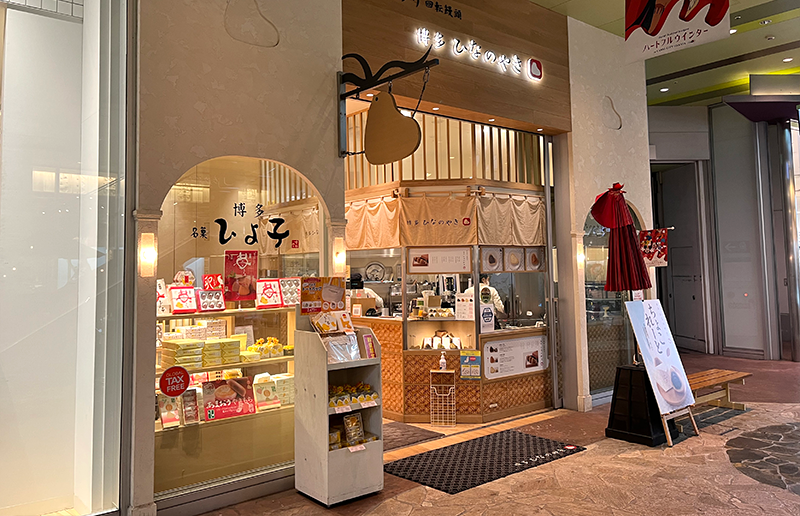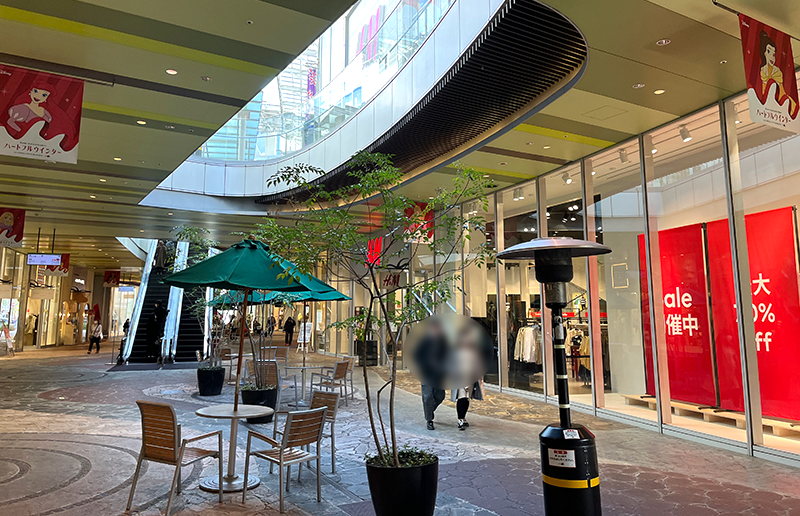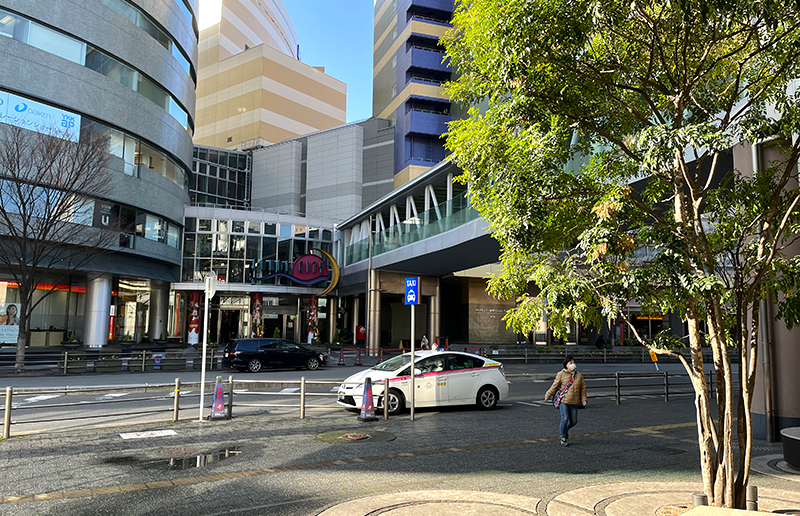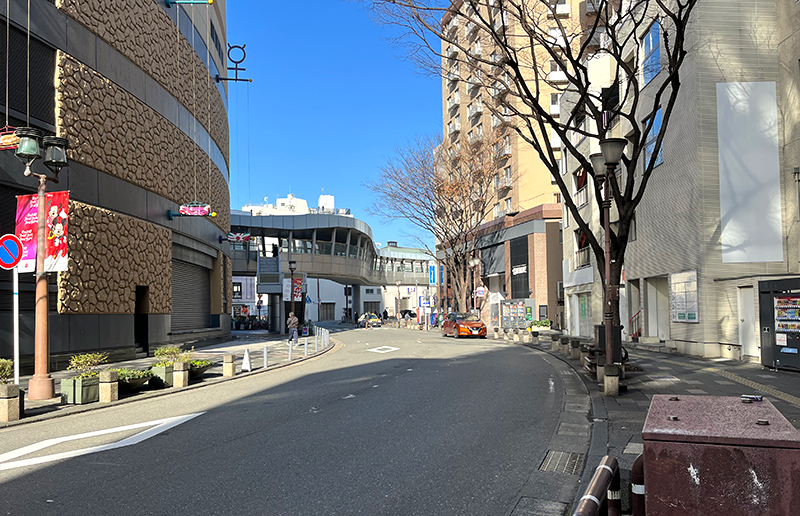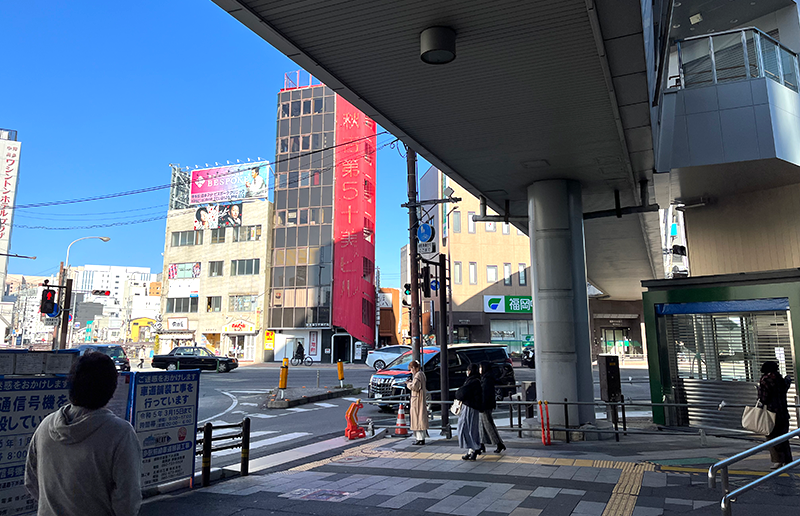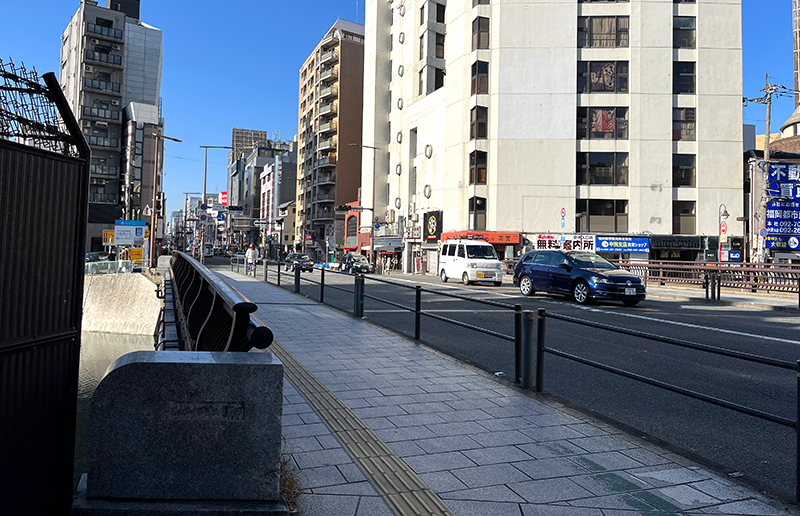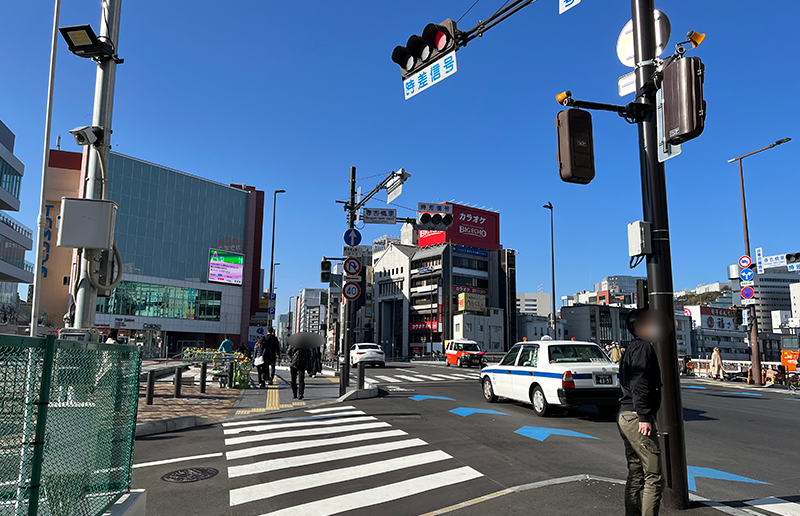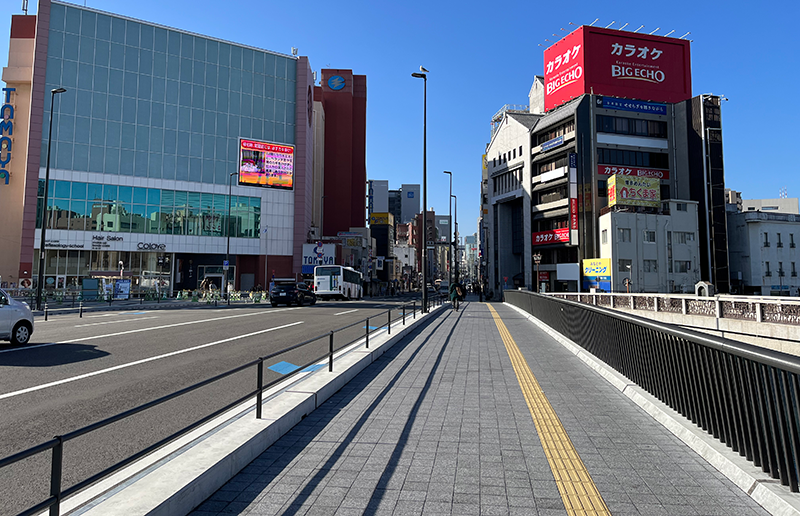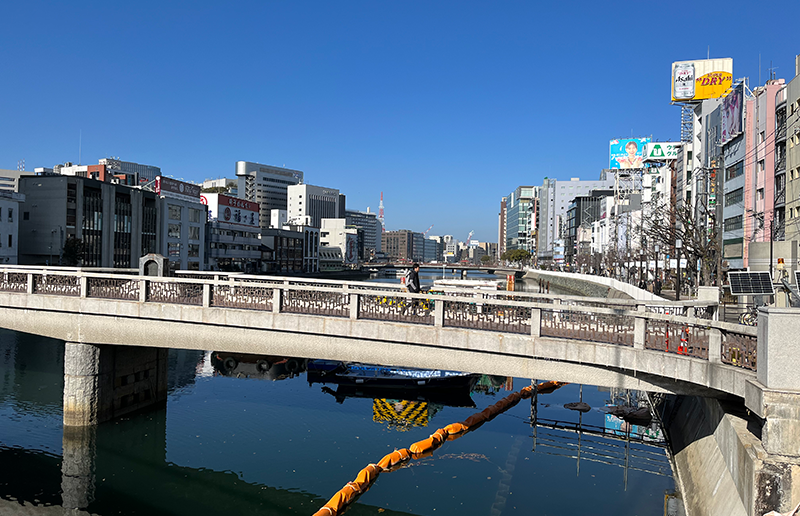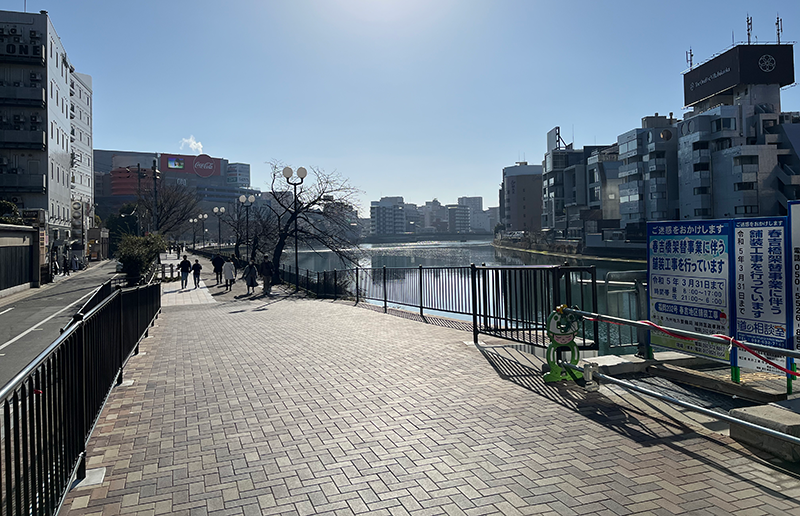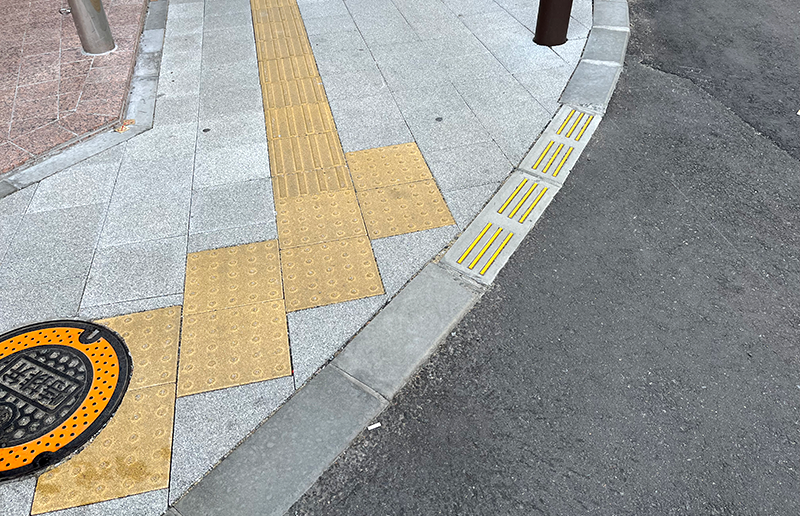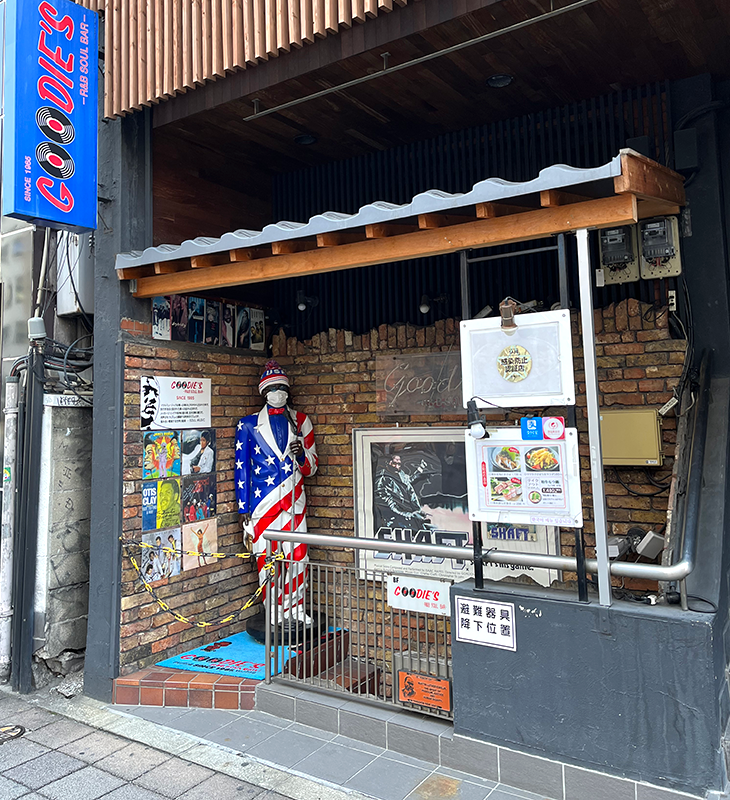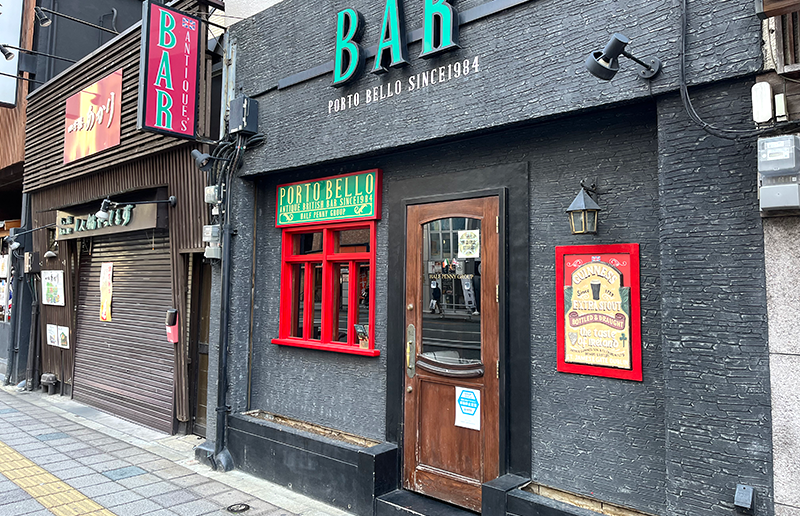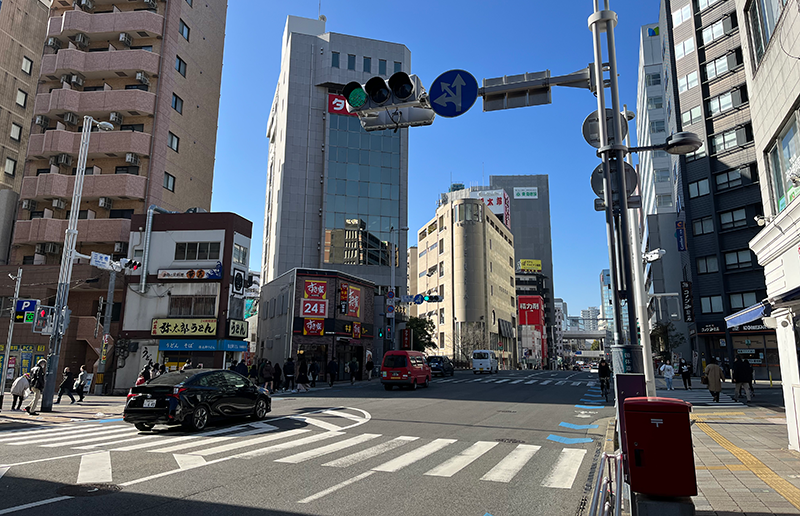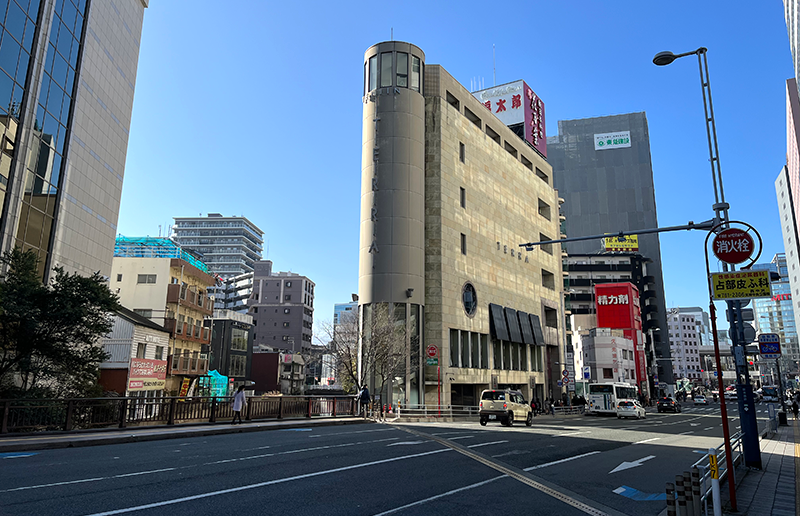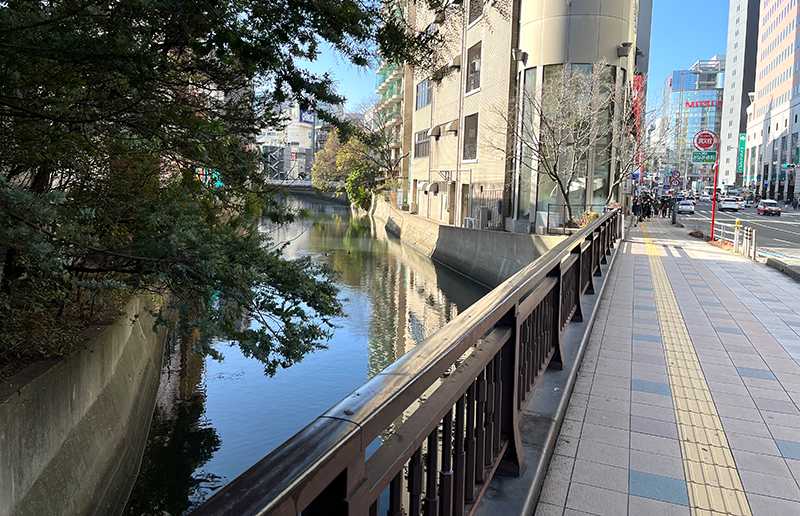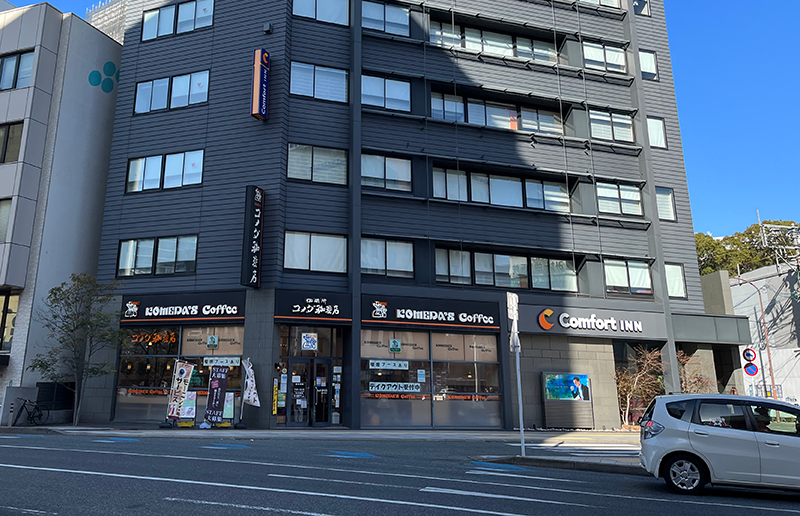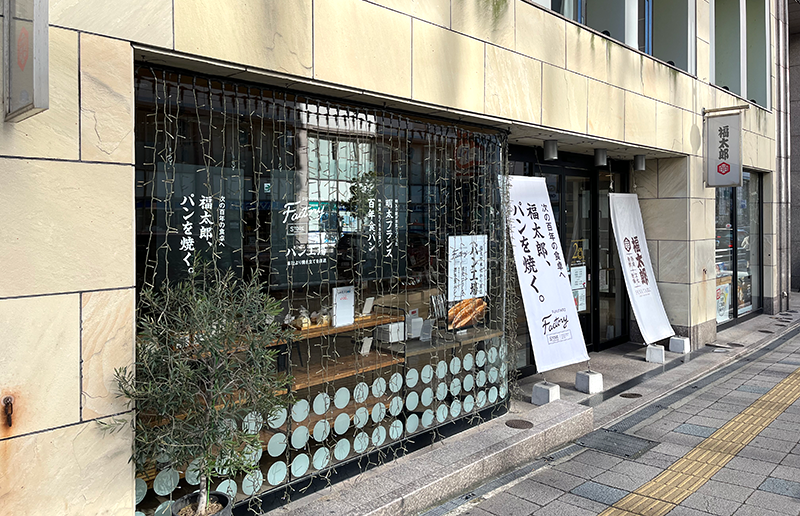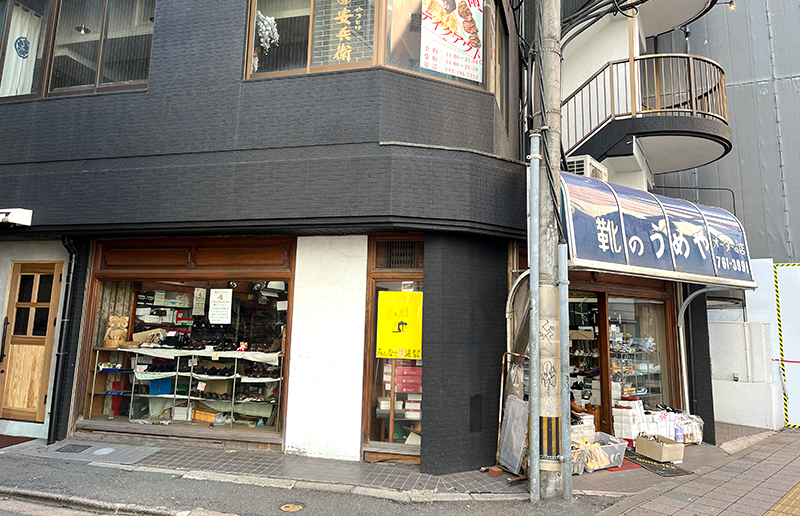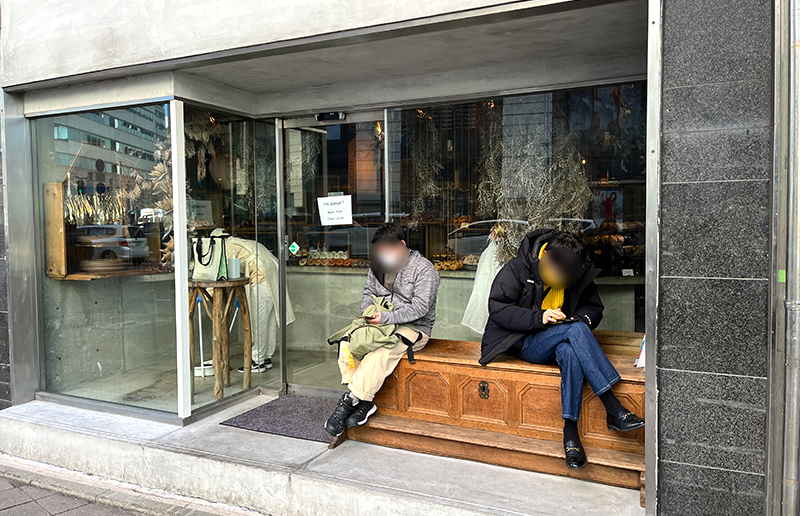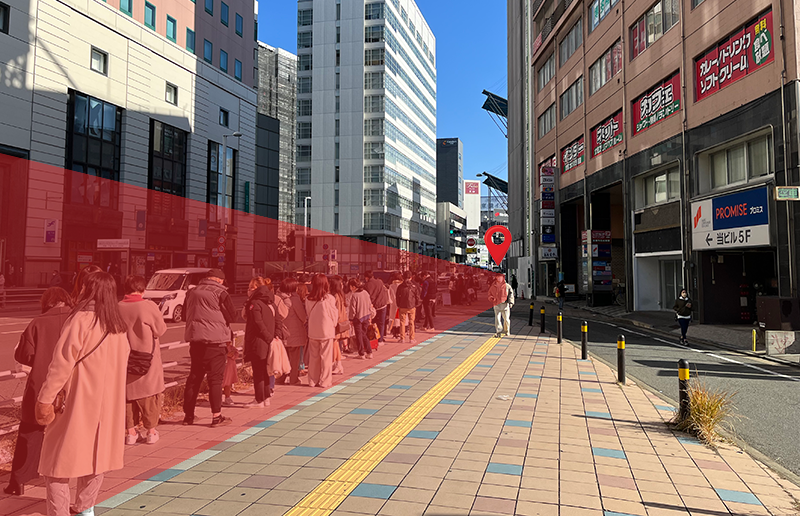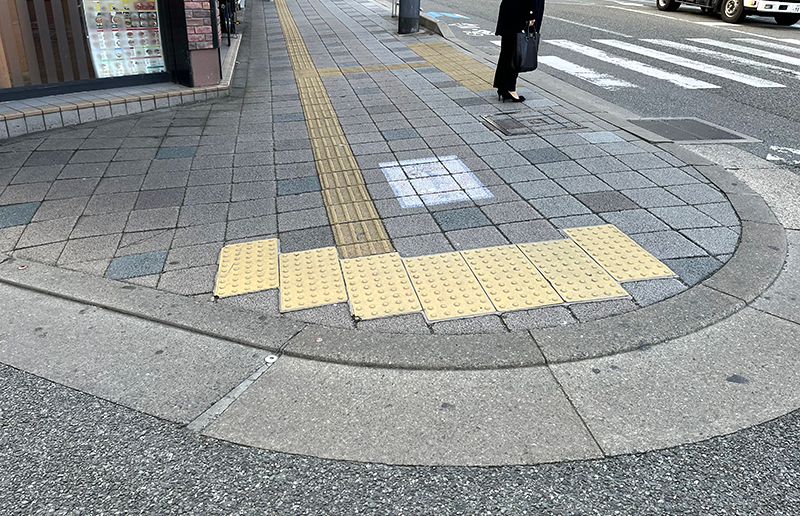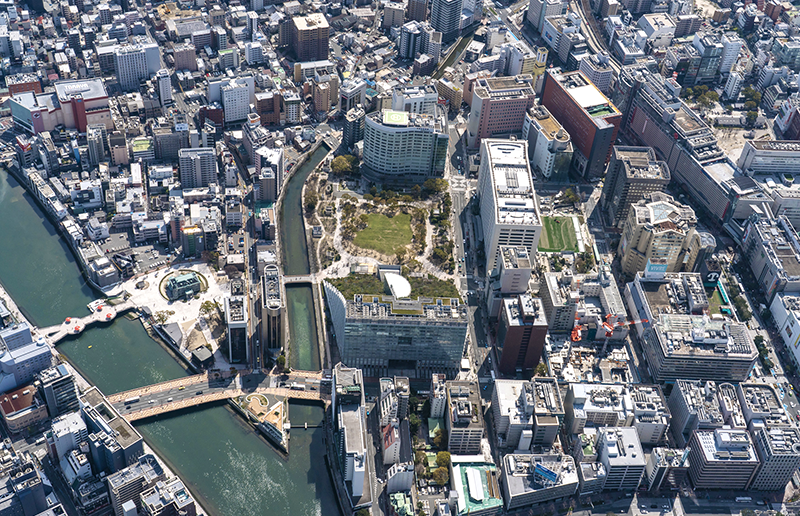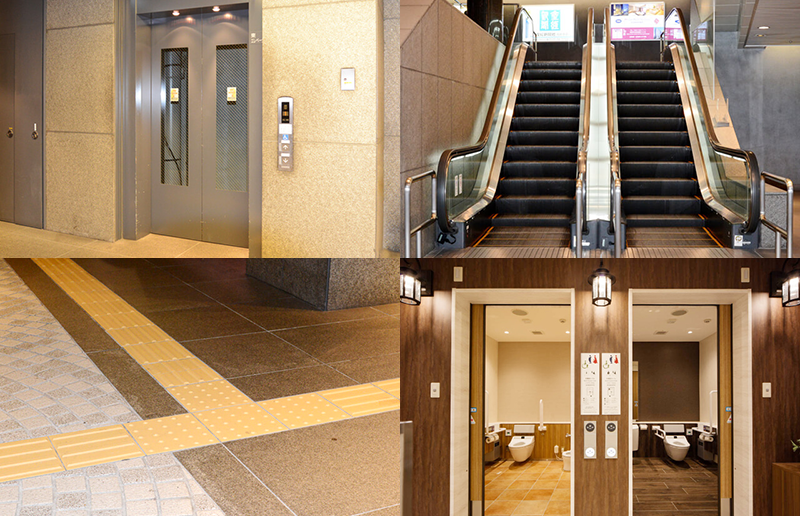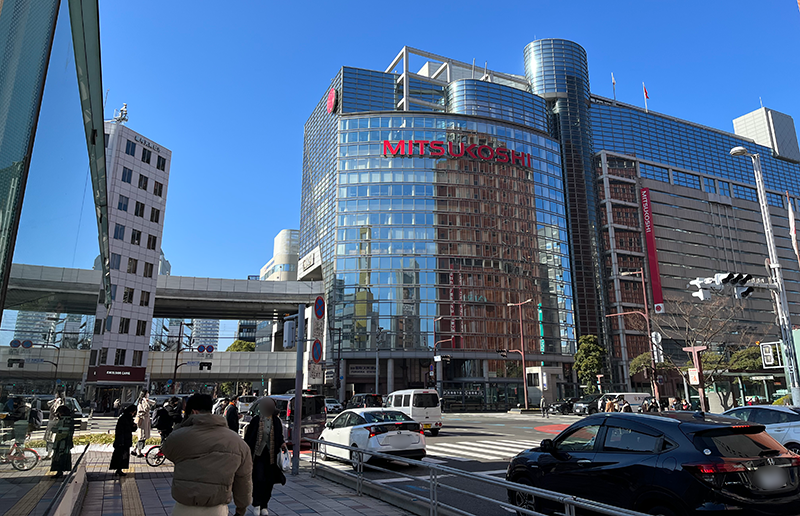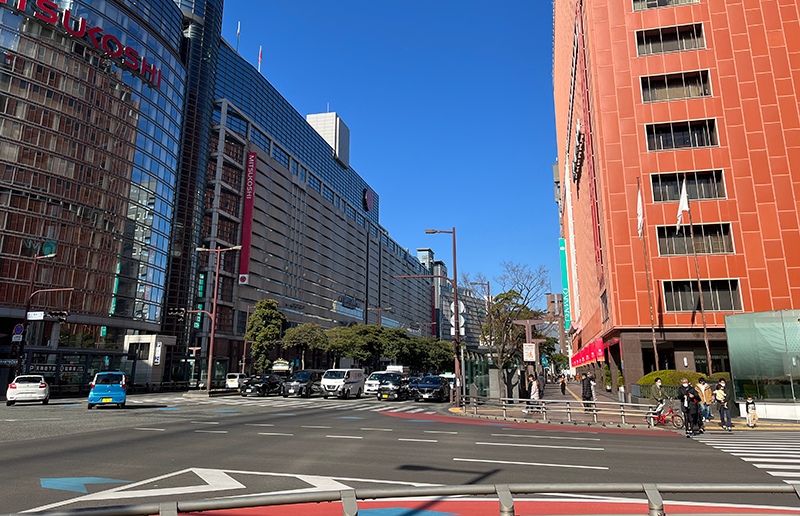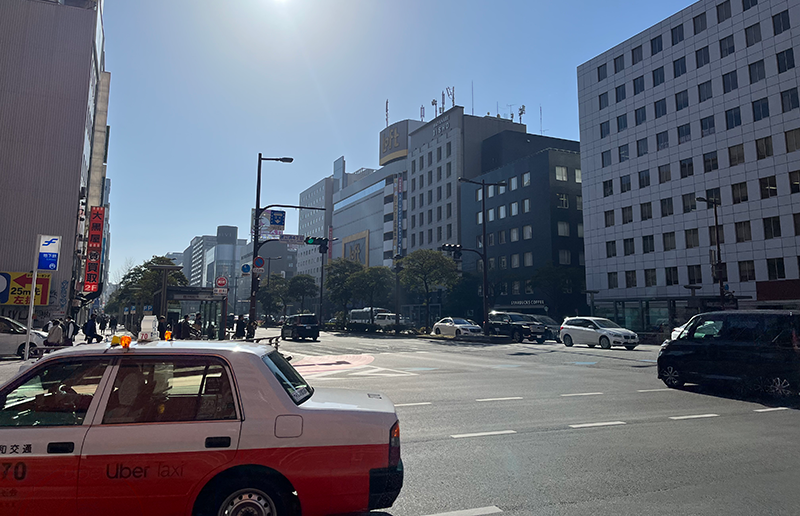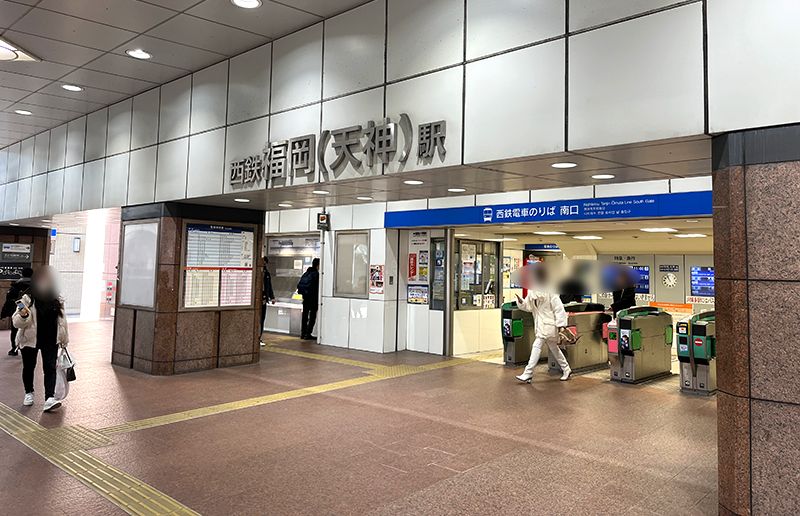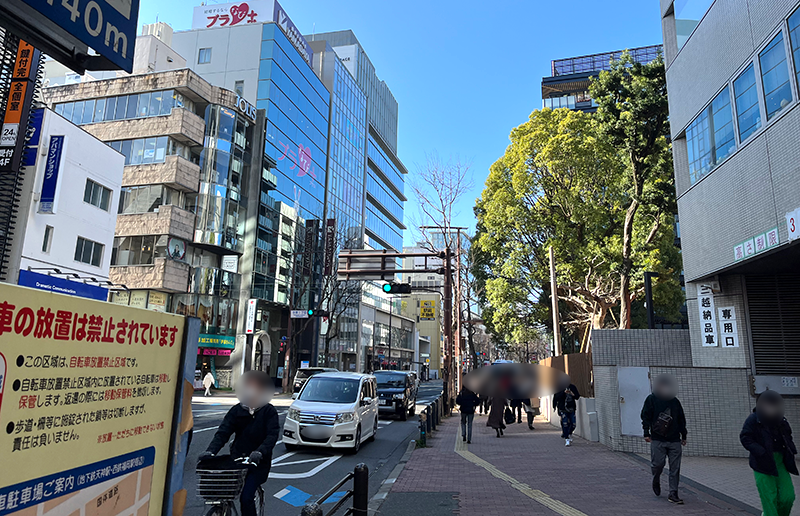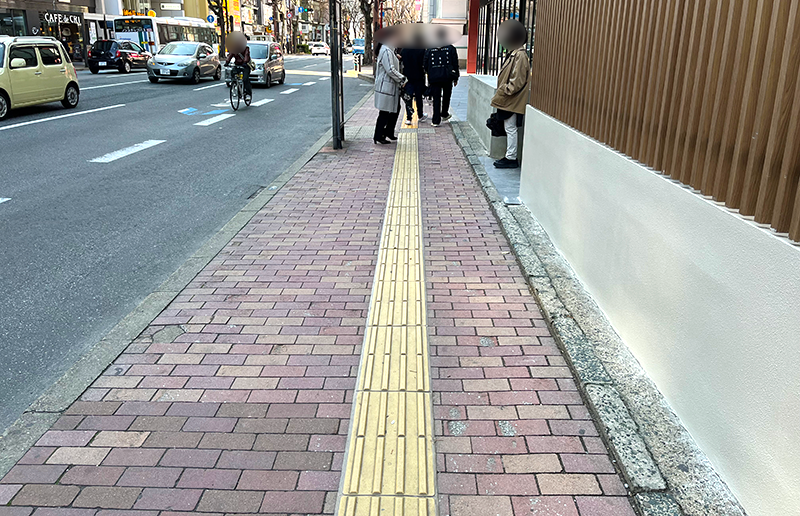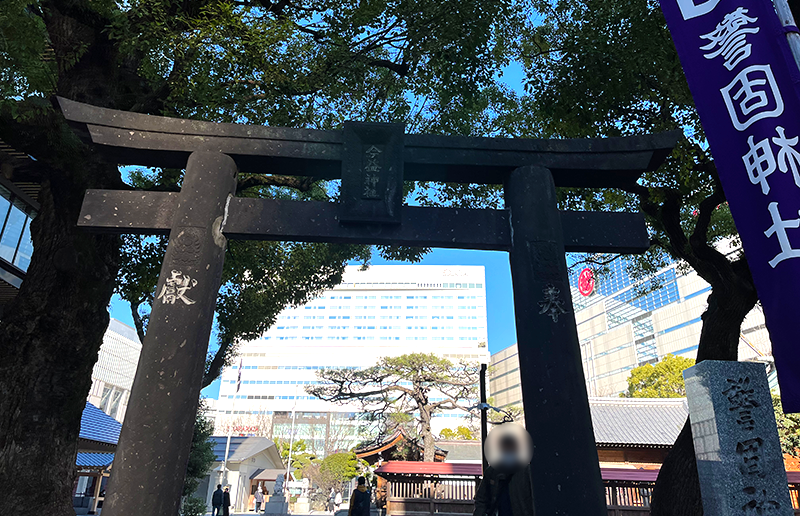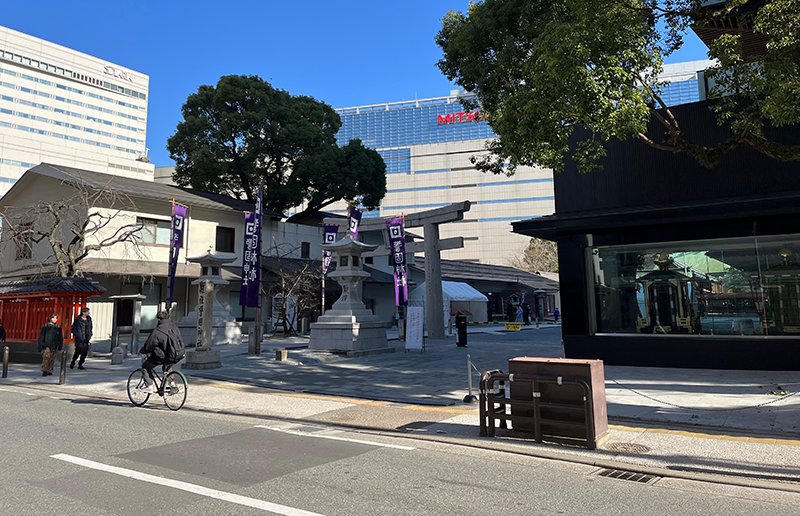Report from Local Volunteer
An 18 km walking course in the heart of Fukuoka, which boasts a population of approximately 1.63 million people, walking through Hakata, Tenjin, Ohori and Momochi
There are no big steps, the road surface is good, and the course is suitable for people in wheelchairs and those who use walking sticks.
January 16, 2023
Chiba Pref. Volunteer: Denim
The walking course is 18km and takes 3 hours and 48 minutes.
I love walking long distances! Introduce interesting places along the walking course!
Hello, I’m Denim, a volunteer from Chiba prefecture. I’m in Fukuoka now, and I’d like to introduce you to Fukuoka while taking a walk. It’s my first challenge to see what kind of report it will be!
I like walking, for my health, and I like to explore the city (I love NHK’s Somewhere Street). And I want to walk as long as possible. It is not important to aim for a goal, but to enjoy walking while looking at the scenery, discovering new places, walking from town to town.
I would like to introduce the walking route that I enjoyed to various people. It’s a challenge to introduce it well so that foreigners can enjoy it! I wonder if I can continue (;^_^A
What is a healthy walk? The ideal is 10,000 steps a day. It’s about an hour and 40 minute walk
According to a survey by the Japanese Ministry of Health and Welfare, although this is a bit old data, Japanese people take an average of 8,202 steps a day for men and 7,282 steps for women. Also, 1,000 steps is the number of steps that can be obtained by walking for about 10 minutes, which means that Japanese people walk for about 70 to 80 minutes a day. The ideal walking time of “10,000 steps a day” is about 1 hour and 40 minutes, and about 2 hours for those who walk slowly.
Exercise, including walking, is associated with lower morbidity and mortality rates for all-cause mortality, ischemic heart disease, hypertension, diabetes, obesity, osteoporosis, and colon cancer. It is also said to be effective in preventing bedriddenness and dementia in the elderly.
Especially when you go outside and take a walk (rather than using equipment such as a room run), the various scenery that you see from your eyes stimulates your brain, and if the weather is nice, your body will be exposed to the sunlight it needs. Also, the wind and air will give good stimulation to the skin and the nerves of the nostrils.
I feel that the act of walking is actually good for all parts of the body, including the brain.
While feeling the nature of the cityscape and trees instead of aiming for the goal
If you take a walk or tour around the town with such a feeling, you may want to walk more. The route introduced here is a long walking course. The distance is about 10km to 20km, and the number of steps is about 15,000 to 30,000 steps. As for the walking time, it will take half a day if you want to see the shops and tourist attractions slowly, and it will take about 1.5 to 2.5 hours if you feel like you are passing by quickly.
But instead of aiming for a goal, please enjoy “walking” while looking at the streets, trees, and buildings, feeling and thinking. The goal is secondary, detours are welcome.
I want people of all ages who use wheelchairs or canes to enjoy part of this course
This is the course I would like to introduce, but I want people in wheelchairs and walking with canes to enjoy it, so I am checking if it is an easy route for them. For example, large bumps, bumps, road surface conditions, etc. are introduced with photos.
However, I am no expert and have never used it in a wheelchair. I don’t know if there are manners. I only have the experience of pushing a wheelchair for a walk. In addition, the controlling conditions are different for electric wheelchairs and manual wheelchairs, and I think that the physical strength varies from person to person.
Therefore, please use this information only as a reference.
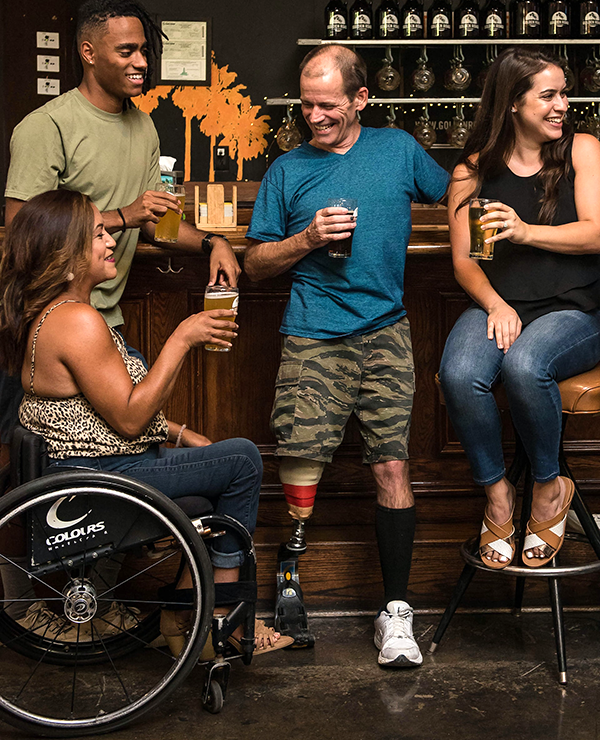
Make sidewalks accessible to everyone!
If there are people who have tried this coerce and felt that “this section was tough” walking with a wheelchair or a cane, even if it’s only part of this course, I would be happy if you could leave a comment here (via the contact form on my profile page)! We will post it on this page. Comments such as “It was fun!” are also very welcome.
Introducing the towns while taking a walk
The first report is from Fukuoka, the largest city in Kyushu!
A course of 18 km, 3 hours and 48 minutes walking through Hakata, Tenjin, Ohori and Momochi!
Fukuoka City is a decree city with the largest population (1.63 million people) in Fukuoka Prefecture and Kyushu (Fukuoka Prefecture, Oita Prefecture, Saga Prefecture, Nagasaki Prefecture, Kumamoto Prefecture, Miyazaki Prefecture, Kagoshima Prefecture).
The number of foreign tourists visiting Fukuoka City was 2,148 in 2019 before COVID-19. In 2023, immigration restrictions for foreigners will be eased, and a V-shaped recovery is expected.
Click the image to go to the Google Map page
Many tourists from South Korea, China and other Asian countries are visiting. You can’t really tell if they’re foreigners by their appearance, but when you walk around town, you can hear foreign languages flying around. I feel that Fukuoka is popular with Asian people. I want such travelers to enjoy this route, so we will introduce it in an easy-to-understand manner.
Trivia about Fukuoka City
“Fukuoka City” is a city with a population that continues to grow and urban development is progressing, but I would like to briefly explain where in Japan the city is located, even for foreigners. Fukuoka City is located in Fukuoka Prefecture, which is located at the northernmost tip of the island of Kyushu in the southwestern part of Japan.
What kind of place is Fukuoka? Fukuoka’s food is good, there are many beautiful women and handsome men, and Fukuoka Hakata’s specialties such as Mentaiko and Tonkotsu (pork bone) Ramen are famous. The birthplace of Udon is actually Fukuoka (there are various theories). Recently, Fukuoka has become famous place for its environment for doing business, as it is easy for start-up companies to grow.
There are more….
Fukuoka ranks first in terms of the number of preserved trees (among ordinance-designated cities). Fukuoka has the highest growth rate of foreign residents. The number of sweets shops and price (cheapness) is also No. 1 in Fukuoka, and there are still many things in Fukuoka that are No.1. Check here if you are interested! (Fukuoka Facts)
Start from Hakata Station, Kyushu’s largest station, used by about 400,000 people a day
Hakata Station has the most users as the land gateway of Kyushu, and the number of users is about 400,000 including the subway. Tenjin Station, located in Tenjin, the busiest city in Fukuoka, has about 102,000 people. Tenjin Station is located in the center of Tenjin Underground Shopping Center, which boasts the largest scale in western Japan, but Hakata Station has four times as many.
The starting point is from Hakata Guchi (Hakata Gate West) at Hakata Station, where there are many such users. Hakata Station has two exits: Hakata Guchi (Hakata Gate West) for the west direction and Chikushi Guchi (Hakata Gate East) for the east direction. This time, you will be starting from Hakata Guchi (Hakata Gate West) in the west, so please do not make a mistake.
Some people may come to Hakata Station by train from each station, so I posted some picture of the ticket gate. There are two ticket gates, the central exit and the north exit, as well as the Shinkansen central exit. The photo below does not include the Shinkansen Central Exit. Click on the photo to enlarge it, so check the signs.
Right side view at the Station Square. You may see a Fukuoka Bus Terminal Building.
On the left side, you can see the large wavy roof, one of the symbols of Hakata Station, and Hakata Marui can be seen in the background.
This JR Hakata station is a multi-functional complex station building with commercial facilities with many famous brands, a movie theater, and halls. Various events are held in the station square, so you can spend a relaxing day here.
If you want to know more about the design concept of this station facility, here are the details.
The Hakata Station premises are crowded, but there are almost no steps, including the station square, and the ground is beautifully tiled, so I think it’s a place where people in wheelchairs and those who use canes will have no problem.
After exiting Hakata Gate West, walk along Hakata Ekimae-dori, which runs straight in front of you, and head towards Canal City Hakata!
According to Google Map, a distance of 650m is 9 minutes away
Exit Hakata Gate West to the station square and you will see the Fukuoka Center Building in front of you. This building was built in 1972, but it is a target building of the redevelopment project “Hakata Connected“.
There is a signboard of “Rakuten” on the building and it stands out. The Fukuoka branch office of Rakuten Group Co., Ltd. is on the 12th floor.
About Rakuten
A simple explanation of Rakuten to foreigners is that Rakuten is a Japanese version of Amazon. Starting with an online store and mall (Rakuten Ichiba), they are now a diversified company that uses IT to develop various industries such as travel, finance, real estate, communication, and baseball team management.
Rakuten also provides services centered on IT overseas. For example, “cashback service” that refunds part of the purchase price of purchased products, “payment service”, “video distribution service”, etc.
There are two Starbucks stores on the way to Canal City Hakata
Walk along Hakata Ekimae St., which runs vertically in front of Hakata Exit, and head for Canal City. The distance is about 650m and it takes about 9 minutes. The sidewalk is straight and the road surface is clean, so it is easy to walk.
There are convenience stores such as 7-Eleven and Lawson, and 2 Starbucks until you arrive at Canal City Hakata. It might be good for people who want to drink coffee and start slowly.
The building where Starbucks Coffee The Blossom Hakata Premier Store is located is a building with a characteristic triangle-like corner, and it is the hotel “THE BLOSSOM HAKATA Premier” operated by JR Kyushu Hotels Co., Ltd. A luxury hotel with 238 guest rooms, which opened in September 2019.
The exterior of the hotel is inspired by Hakata-ori textiles, and the walls are decorated with tiles such as “Hakata-bei,” and artworks that display traditional crafts related to Kyushu are also impressive.
On this section of Hakata Ekimae St., I walked on the sidewalk on the left. The road is wide, and there are no steps or ground to worry about for those who use wheelchairs or canes. Depending on the day of the week and time of day, it can be crowded with people.
Canal City Hakata, one of Fukuoka’s tourist attractions, is a popular large-scale complex facility
Canal City Hakata is a multi-purpose facility with a shopping mall, movie theater, theater, amusement facility, two hotels, showrooms, offices, etc. on a site of approximately 43,500 square meters. It opened on April 20, 1996 as part of a redevelopment project in Fukuoka City.
In the center of the facility, which is lined with curved and colorful buildings, there is a canal of about 180m, and a dynamic fountain show is held. Events and live music performances by performers are held on the waterside stage, making it a bustling tourist spot where you can gather and relax.
Lt’s keep walking! If you walk about 450m from Hakata Station Square along “Hakata Ekimae St.”, you will find the “Hakata Ward Office South Exit” intersection. At this point, Canal City Hakata can be seen about 130m ahead.
In the photo of the intersection below, the red mark is part of the East Building of Canal City Hakata (covered in green). Let’s head to the entrance of the East Building!
Hakata Hinanoyaki: New brand of Hiyoko Honpo Yoshinodo, which is familiar with Hiyoko
The interior of the Canal City Hakata facility is cobbled and tiled. There are gaps and grooves, but the grooves are shallow. I thought that depending on the angle of the tire and cane, it would be a little worrisome. This is just my personal opinion.
Click on the photo to see a larger image.
Let’s walk about 1.4km (18 minutes) straight to Kego Shrine, a power spot, on Route 202, which leads to Nagasaki Prefecture!
After passing through the East Building, you will see a street called “Gionmachi Route 276”. Turn right on that street and after about 260 m you will hit Route 202. Turn left and walk straight on Route 202 for about 1.4km (18 minutes), and you will reach Kego Shrine, a power spot in Tenjin.
Go straight on Route 202 to Kego Shrine for about 1.4km (18 minutes)
The section from the Gionmachi intersection (Taihaku-dori intersection) to the Ohori 1-chome intersection (Jonansen intersection) is called the Kokutai-doro (national road) by the locals. It is also a general national highway that connects to Nagasaki City via Sasebo City.
I left Canal City Hakata and used the sidewalk on the right side, but at the intersection of Gionmachi West before crossing Nakasu Shinbashi, I crossed the traffic light on the sidewalk on the left side. It’s hard to tell from the photo, but it’s slightly slanted from the left to the right. This is just my personal opinion.
Click on the photo to see a larger image.
The historic Haruyoshi Bridge, both old and new, are lovely bridges spanning the Naka River
After crossing Nakasu-Shinbashi, walk about 3 blocks and you will come to the Haruyoshibashi Higashi intersection, where you will meet Haruyoshibashi.
The current Haruyoshi Bridge was built when the National Road was constructed, and there is an old bridge called Nakasu Kakehashi on the right side of that bridge. In fact, it was the old Haruyoshi Bridge, and it was given a new name in 1948 when the new bridge (now Haruyoshi Bridge) was built.
The Nakasu Suspension Bridge (former Haruyoshi Bridge) seems to have existed in 1737, and the old and new bridges spanning the Naka River are somewhat loving.
I learned later that the new Haruyoshi Bridge has a bridge name board with calligraphy by Mr. Kazuyoshi Morita (Entertainer: Tamori). The reason is that he is from Fukuoka and the name “Harukichi” is the same name as Tamori’s father. For more details, please click here. I did not know. . . I missed it.
In fact, when the new bridge was built, the old bridge was supposed to be demolished, but the locals and people with connections who regretted the historic old bridge objected, so it was left as a pedestrian bridge.
That’s right, they’re right to leave! Click here for the history of Haruyoshi Bridge.
I used the sidewalk on the left. At the beginning and end of Sumiyoshi Bridge, steps were taken to eliminate the steps for wheelchairs. It’s a recently renovated bridge, so I’m glad that it’s barrier-free. This is just my personal opinion.
Click on the photo to see a larger image.
Haruyoshi, an area that is lively from day to night, with restaurants lining the streets
In the Haruyoshi area, the rows of houses from before the war still remain and you can feel the atmosphere of a downtown area full of humanity. A business district is formed around Watanabe-dori, and at night there are many restaurants with neon lights adjacent to Nakasu.
It is a town that has been showing excitement in recent years, such as holding night markets instead of morning markets and bar-hopping events around restaurants.
Lined with cafes, izakayas, clubs and restaurants
Tetsunabe (left) and Sushi Shogun (right)
Tetsunabe is a gyoza specialty store that started as a food stall in 1963. Sushi Shogun is a stand-up sushi place. 90 yen to 550 yen for 1 kan tax (1/8/2023)
Maruya
Maruya is an izakaya that mainly serves fish. In addition to sashimi/sushi, live sashimi, a la carte dishes, skewers, grilled dishes, boiled dishes, deep-fried dishes, iron plates, and more.
MIYABI
It seems to be a place where nationwide local monthly product fairs are held, and #Heart Sand was advertised at this time.
BAR PORTO BELLO
A British bar where you can talk slowly with the bartender. The interior and decoration are also carefully selected, and the liquor is selected from standard to rare.
This section was taken on the sidewalk on the left. There were no steps or ground to worry about, but if you go to a store, there are some stores where it is difficult for wheelchairs to enter due to the steps and width of the entrance. I hope that the number of barrier-free stores will increase.
In this section, there is also a popular donut shop with a line of nearly 30m!
As you get closer to the center of Tenjin, the traffic gradually increases, and both sides of Kokutai Road are lined with stylish shops such as cafes and shops, and you can also see long-established specialty stores with an old-fashioned atmosphere.
Among the various shops crowded together, the one that caught my eye was the donut specialty shop, which has an hour wait.
According to Google Map, a distance of 280m is 3 minutes away
Fukutaro Tenjin Terra
Fukutaro Shop’s new style is to add a bread corner to the shop that sells mentaiko and rice crackers.
This shop seems to be a donut specialty store that currently has three stores in Nakameguro, Shibuya, and Fukuoka, Tokyo, and there is a line. At this time, he thinks there was a line of 30 meters long. If you look at the linked Instagram, it certainly looks delicious ♪ However, depending on the time of day, it seems that you will have to line up for more than an hour. The red part in the photo is the queue, and the navigation mark is the location of the store.
At the Sankobashi (Sanko Bridge) intersection, take the left-hand sidewalk to enter the reference bridge, but it felt like a slight climb. I don’t mind the unevenness of the sidewalk and the narrowness of the road in the section of Sanko Bridge. This is just my personal opinion.
It may be difficult to see the slope in the photo. Click to view larger image.
Tenjin is the busiest city in Kyushu. Further development under the urban redevelopment project “Tenjin Big Bang”.
“Tenjin” is Kyushu’s largest downtown and business district, with department stores, fashion buildings, banks, trading companies, news organizations, etc., and is always bustling with businessmen, travelers, and shoppers.
In addition, the 6th largest underground mall in Japan (total floor area: 53,300m²/length: 600m), Tenjin Chikagai (nickname: Tenchika), is located between the Tenjinbashiguchi intersection and the Watanabe-dori 4-chome intersection. The city hall is in Tenjin, Chuo Ward, and the prefectural office is in Hakata Ward.
What is Tenjin Big Bang?
Fukuoka City, which was designated as a National Strategic Special Zone in 2014, has undergone special approval of various regulations and a relaxation system to rebuild aging buildings into advanced buildings, and to ensure the safety and security of citizens, workers, and visitors. In 2015, they started a project to create new spaces, employment, and tax revenue.
The name of the project is “Tenjin Big Bang”. The area is the center of Tenjin with a radius of about 500m (about 80ha) from the Tenjin intersection. Click here for details.
Watanabe-dori: Department stores, fashion buildings, and office buildings line both sides
Watanabe-dori is a section of approximately 1.3 km from the Tenjinbashiguchi intersection in the north to the Watanabe-dori 1-chome intersection in the south. In that section, department stores, fashion buildings, and office buildings stand on both sides of the street, and it is bustling with many people, including businessmen, shoppers, and tourists, all day long.
19 minutes on foot from Tenjinbashiguchi intersection to Watanabe-dori 1-chome intersection, about 1.3km
On this route, Kokutai Road and Watanabe-dori intersect at the Watanabe-dori 4-chome intersection, but you might want to take a detour and explore the downtown area!
You can also get off at the Watanabe-dori 4-chome intersection and go down to the Tenjin Underground Shopping Mall. If you want to walk more than 18km on this route, if you consume 2km here, it will be a walking route of 20km in total.
This Tenjin Underground Shopping Mall is barrier-free (elevators, escalators, wheelchair-accessible toilets, braille blocks, nursing rooms, etc.), so it is designed to be enjoyable for the elderly and people in wheelchairs.
About the barrier-free Tenjin Chikagai
Watanabe-dori 4-chome intersection where Tenjin’s main street (Kokutai Road x Watanabe-dori) intersects
Fukuoka Mitsukoshi is right in front of you when you walk along the Kokutai Road towards the Watanabe-dori 4-chome intersection.
The sidewalks around the Watanabe-dori 4-chome intersection are wide and tiled, so you can feel the steps of the crosswalk without any problems. I was walking on the sidewalk on the left side, but I wanted to go to Kego Shrine on the right side, so I moved to the sidewalk on the right side at the intersection. There is a lot of traffic, so please be careful when crossing the road.
About 290m (4 minutes) from the Watanabe-dori 4-chome intersection to Kego Shrine, you’re almost there!
Please walk on the sidewalk on the right (Kego Shrine side) facing the direction of progress.
Nishitetsu Fukuoka (Tenjin) Station, the largest terminal station of Nishi-Nippon Railroad (Nishitetsu)
Nishitetsu Fukuoka (Tenjin) Station is the largest terminal station of Nishi-Nippon Railroad (Nishitetsu), next to Hakata Station, the largest terminal station representing Kyushu and Fukuoka. The Nishitetsu Tenjin Highway Bus Terminal is located in the station building “Solaria Terminal Building”, and serves as a hub for highway buses that arrive and depart within the city.
There may be some people who start and finish this walking route at this station instead of “Hakata Station”. The route will be approximately 14km walking distance.
The sidewalk on the right side of Nishitetsu Fukuoka (Tenjin) Station becomes narrow. Above is a picture of the sidewalk on the Kego Shrine side (the width becomes narrower). Also, there is a bus stop in that section, so please be careful as it may be difficult for people in wheelchairs or walking with sticks. Weekdays are commuting hours, weekends are considered to be crowded from noon.
Arrive at Kego Shrine! A power spot for praying for warding off evil, winning, and passing exams!
Although it is a passing point of 18km, we have arrived at Tenjin’s power spot “Kego Shrine”! It takes about 2.3km (31 minutes) to walk from Hakata Station where we started, but let’s get the power of this Kego Shrine to complete the remaining 15.7km!
And that’s all for now! Pictures and introductions of Kego Shrine will be continued in the next report. How was the route and my guidance so far? I would love to hear from you via my contact form!
Hello, I’m Denim. I live in Chiba Prefecture, but I have come to Fukuoka for business. So this time, I would like to introduce Fukuoka! I also report on “Yurugi Jizoson” and “Koppa Jizo”, which are cultural properties designated by Funabashi City, Chiba Prefecture. So please check it out!






